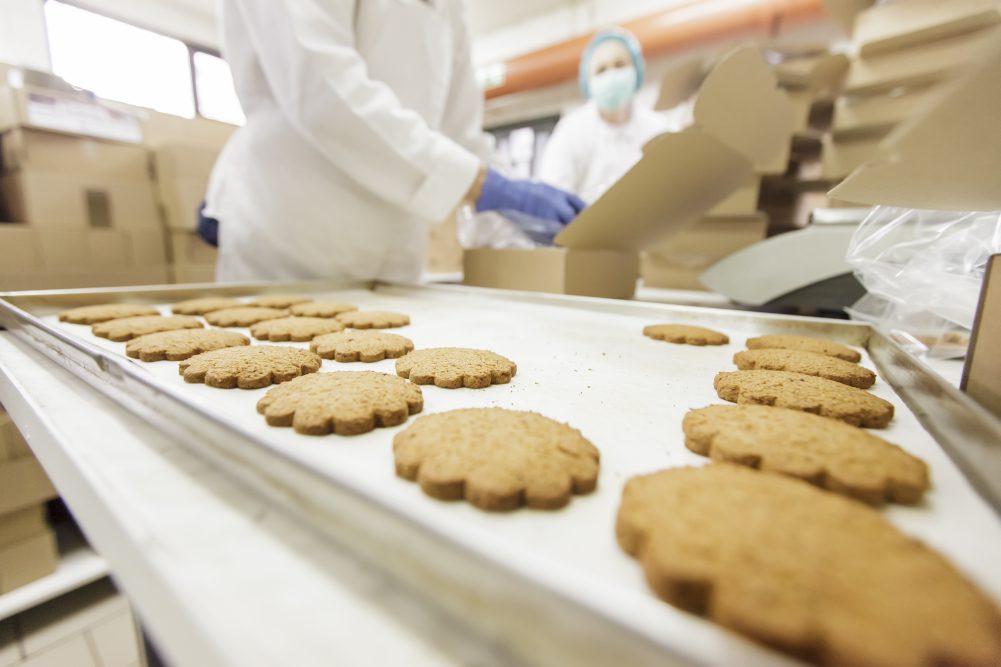There are a lot of variables in play when building a new industrial food plant, and site selection is one of the most important decisions you’ll make — so there are several things to keep in mind.
It’s not just a matter of securing a piece of property and breaking ground or renovating. The location you choose will have a direct impact on the financial success of your new facility.
Here are seven things you must consider when selecting a site for your new food plant.
1. Geographical logistics
Even if you hated it in high school, geography matters when it comes to site selection. Geographical logistics actually have the biggest impact on the bottom line. Is the land, for example, buildable as is or will it require moving earth or improving soils? Those costs can quickly add up.
The distance to sources of raw materials and your customers is definitely something to keep in mind. To manage costs, you don’t want to be too far from either of them. In addition, the surrounding transportation infrastructure is crucially important. Robust access is key, both for transporting materials and finished products to and from the site, and for a reasonable employee commute.
Something else to consider is whether the region you choose is prone to extreme weather events or natural disasters. Some areas of the country experience hurricanes, tornadoes, earthquakes and harsh winters more frequently than others. These can all disrupt business operations; therefore, open discussion and proper planning will assist in the selection process.
2. Environmental impacts
The immediate surroundings of your new site are also important. A neighboring facility, for example, may produce air emissions that will impact your operations. You’ll also need to keep in mind environmental regulations and make sure you can comply in terms of any expected emissions your baking facility will generate. The same goes for wastewater. What can the local area receive? Will you need to pretreat the wastewater before it goes to the municipal utility?
3. Local labor market
This is another big one. You must assess the labor market in the city or region you are considering for a new facility. This includes understanding the unemployment rate, available labor, overall economy and other factors. If you require a significant labor force, for example, a site far away from a major metropolitan area or town would not be ideal.
Something else to consider is whether locals have the skills and training your facility demands. Is the area known for a particular kind of workforce with certain abilities? Perhaps a factory used to be located there that employed people with the knowledge and experience you’ll need.
4. Government incentives
The investment incentives offered by various governments vary greatly. It’s always good to compare what’s out there and how certain offers will affect your bottom line. Certain regions offer tax breaks for economic improvement zones that they’re trying to revitalize. You may be able to negotiate favorable terms for the zoning and permitting process as well. Some municipalities also offer lower impact fees or a stipend to cover the cost of training the population. It pays to know what’s on offer before you commit to a site.
5. Government regulations
Ah, red tape. There’s no avoiding it — but carefully choosing a site for your new facility can help minimize headaches. As noted above, you might be able to negotiate certain things when it comes to permitting and zoning. But it is likely some regulations you’ll just have to live with, so make sure those are known as soon as possible, in order to not negatively impact your bottom line.
6. Facility type
It’s not just the site, but the building you’ll put on it that’s important to think about. Will you build a greenfield facility or retrofit an existing building? Many times, retrofitting isn’t ideal since food manufacturing facilities have unique and specific needs. Your operations will likely have certain food safety, processing and structural requirements, so it’s important to take these into consideration when analyzing a site.
7. Utilities
Your facility will need adequate electricity, gas, water and sewer access. Is everything you need in terms of utilities available at your preferred site? Is the infrastructure in place to meet your needs? If not, additional time and expenses may be required to make the site suitable for your operations.
Prioritizing and getting help
Just reading through the list above might make you think site selection is an impossible process, especially since no one location will check every box. Setting priorities and knowing what your non-negotiables are, however, can make things far easier.
The number one priority is understanding your logistics. That comes first, and everything else flows from it. If the location is too far from raw materials and customers, or there’s no available labor in the area, then you’re not setting yourself up for success. Factors that will negatively affect the bottom line — such as excessive initial costs from infrastructure improvements and site remediation — are also a sign that the site may not be for you.
Have questions about selecting a site for your facility? Stellar advises food manufacturers with site selection and more. Feel free to leave a comment below or send me your questions at foodforthought@stellar.net




I like your blog. Its one of the best blogs online